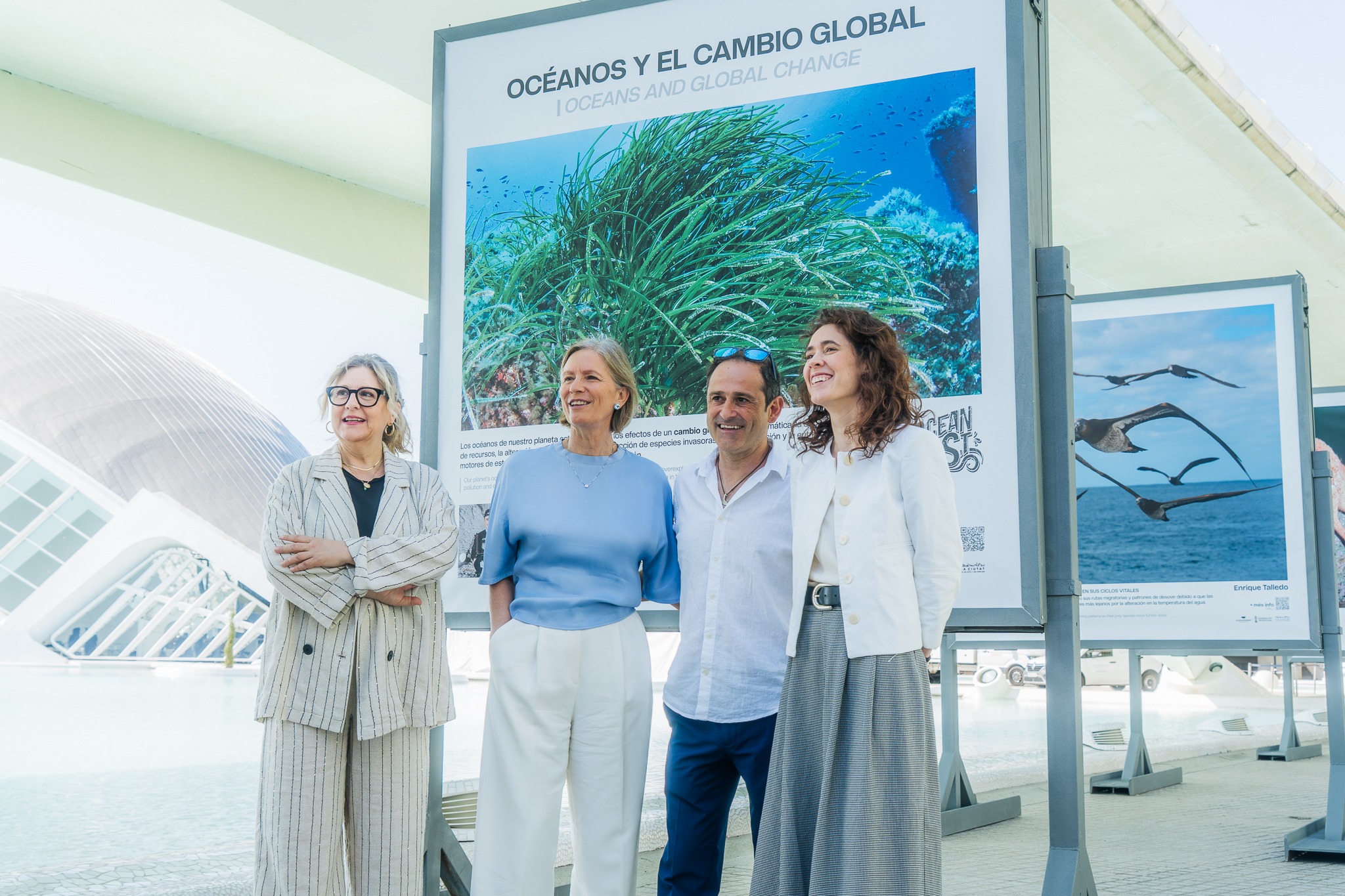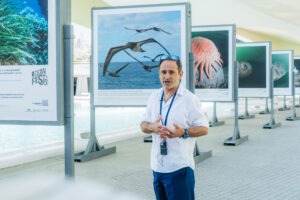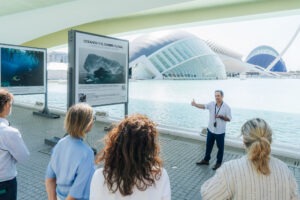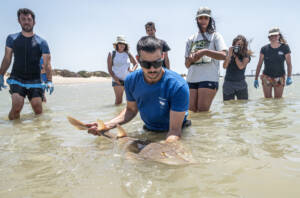The Oceanogràfic highlights the human impact on the oceans in a photographic exhibition at the Ciutat de les Arts i les Ciències
22 de May de 2025

- The exhibition brings together 30 large-format images by documentary filmmaker Enrique Talledo and is part of the ‘OceanFest’ marine outreach festival
Coinciding with the International Day for Biological Diversity, the Oceanogràfic of Valencia and the Ciutat de les Arts i les Ciències today inaugurated the exhibition “Global Change: Oceans, 21 Scientific Evidence,” a large-format photographic collection by marine documentary filmmaker Enrique Talledo, which is displayed outdoors between the Hemisfèric and the Palau de les Arts.
The exhibition, consisting of thirty images, traces a visual journey through the effects that human activity is having on the Planet’s oceans. These threats are part of the so-called global change. From the loss of coral reefs to the melting of the poles, the photographs combine visual aesthetics with rigorous scientific information and awareness messages aimed at the general public.

Each image is accompanied by an explanatory panel that gathers data and testimonies collected by Talledo himself during his more than 30 years of expeditions across the five continents. “The oceans are the blue heart of our Planet, and today they are beating with difficulty,” explained the photographer during the opening ceremony. “In addition to overfishing and marine pollution, there are now more global threats, such as the acidification of the seas or the rise in sea level.”
Ana Ortells, director of the Ciutat de les Arts i les Ciències, highlighted the opportunity to inaugurate this exhibition on such a significant date. “Today is May 22, International Day for Biological Diversity, and this exhibition draws our attention to the consequences of our activity on marine biodiversity,” Ortells noted, while encouraging visitors “not only to focus on the aesthetic beauty of the photographs, but to delve into the message of urgency they convey.”
For her part, the director of the Oceanogràfic, Leocadia García, underlined the transversal dimension of the project. “We want to unite art, science and commitment in the same space,” García indicated.
She also explained that the exhibition represents a further step in the Oceanogràfic’s desire to extend its messages beyond its facilities, bringing scientific dissemination closer to the public space.

A free exhibition for visitors
The exhibition is designed as a space for free access and reflection, suitable for all visitors.
Its location on one of the busiest walkways in the complex guarantees high visibility and makes it an environmental education tool.
The images range from snapshots of marine life to scenes of symbolic burden on habitat degradation, such as turtles trapped in plastics, schools of fish reduced to rubble, or glaciers collapsing before the advance of global warming.
The exhibition will remain installed for the coming months as one of the main attractions of ‘OceanFest’, the annual science outreach festival promoted by the Oceanogràfic, which celebrates its third edition this year.



